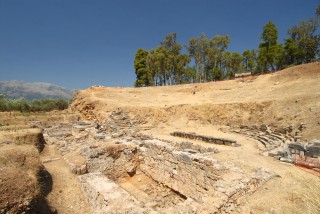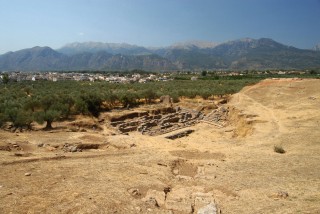
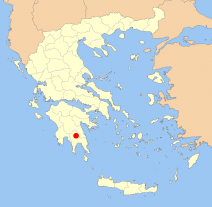 Ancient Spartans, as we know, have not left many traces of their existence. They did not think it was important to construct monuments and temples and so, after their extinction overwhelmed by the nearby Mystras Byzantine civilization, the only thing left of them were the myths about their courage and their original philosophy of life and very little else … yes little else, but there is something!
Ancient Spartans, as we know, have not left many traces of their existence. They did not think it was important to construct monuments and temples and so, after their extinction overwhelmed by the nearby Mystras Byzantine civilization, the only thing left of them were the myths about their courage and their original philosophy of life and very little else … yes little else, but there is something!
[sam id=”7″]
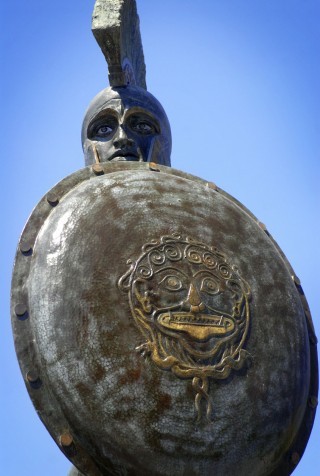 I want to make clear that the site of Sparta is absolutely nothing special, especially when compared to the nearby Mystras. But since I too believed for years that there was absolutely nothing left to see of the great Sparta, I was pleasantly surprised by the archaeological site, both for its position and because I always find fascinating sites that have still works in progress, with archaeologists that work actively.
I want to make clear that the site of Sparta is absolutely nothing special, especially when compared to the nearby Mystras. But since I too believed for years that there was absolutely nothing left to see of the great Sparta, I was pleasantly surprised by the archaeological site, both for its position and because I always find fascinating sites that have still works in progress, with archaeologists that work actively.
But before we get to the remains it is a must to stop to pay tribute to the heroic Leonidas, hero of the battle of Thermopylae in charge of the famous 300. This at least is what dozens of young people, more or less buffed, do coming to extend respect to their idol! And of course you cannot leave without a snapshot and a dab at the foot of the statue.

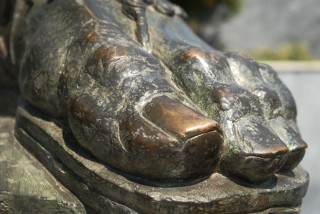 For the sake of history, Leonidas is the historical figure who said the famous phrase “Molon Labe” (come and take them) when he was asked by the Persians, who were clearly superior, to surrender their weapons. Phrase which, not coincidentally, is also a good example of laconic sentence 😉
For the sake of history, Leonidas is the historical figure who said the famous phrase “Molon Labe” (come and take them) when he was asked by the Persians, who were clearly superior, to surrender their weapons. Phrase which, not coincidentally, is also a good example of laconic sentence 😉
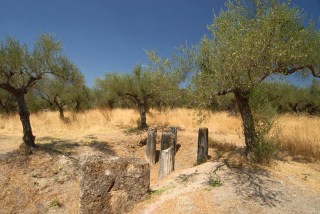
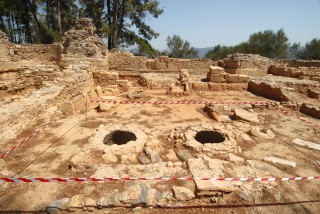
The archaeological site is just behind the stadium and you can get very close with your vehicle.
Climbing up the hill you get a great view on mount Taygetos and the huge ancient theater.
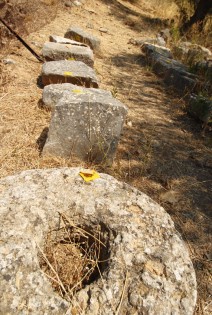 Wandering around on the hill you will see here and there stretches of findings, lined up and cataloged, each with its beautiful color card with the codes that will help reconstructing, I suppose, parts of the theater and the Acropolis.
Wandering around on the hill you will see here and there stretches of findings, lined up and cataloged, each with its beautiful color card with the codes that will help reconstructing, I suppose, parts of the theater and the Acropolis.
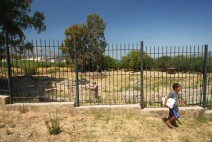 A little further away from the major archaeological site, there are the remains of the sanctuary of Artemis Orthia, where teenagers had to pass a test of strength which consisted in being whipped to blood in public. There is not much to see and the site is closed to the public for now, as is the temple of Apollo.
A little further away from the major archaeological site, there are the remains of the sanctuary of Artemis Orthia, where teenagers had to pass a test of strength which consisted in being whipped to blood in public. There is not much to see and the site is closed to the public for now, as is the temple of Apollo.
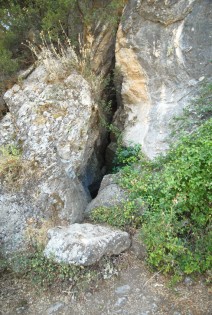 And here we are in the pure legend. This crack in the rock, which opens onto an impressive chasm, would be where the Spartans threw babies born with deformities and those considered too weak. This version was contradicted by archaeologists who, until a few years ago, believed that instead, children with problems were simply abandoned to their fate in the woods of Mount Taygetos. Recent studies have discovered that all human bones found in the area dated as Spartan period, belong to males aged between 18 and 35 years. Apparently, the Spartans were not so cruel with infants as they had us believe.
And here we are in the pure legend. This crack in the rock, which opens onto an impressive chasm, would be where the Spartans threw babies born with deformities and those considered too weak. This version was contradicted by archaeologists who, until a few years ago, believed that instead, children with problems were simply abandoned to their fate in the woods of Mount Taygetos. Recent studies have discovered that all human bones found in the area dated as Spartan period, belong to males aged between 18 and 35 years. Apparently, the Spartans were not so cruel with infants as they had us believe.
The place is called Kaedas and is located just outside the village Tripi on the road to Kalamata. One note: on this road, just out of Sparta, you will find on your left a fountain from which you can refill your tank. Proceeding to Tripi you will meet three or four more.
| Info Box |
|
[sam id=”7″]

